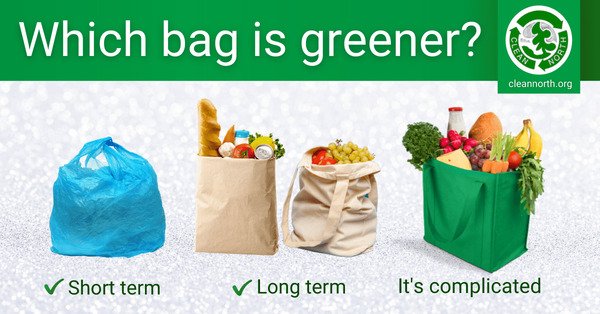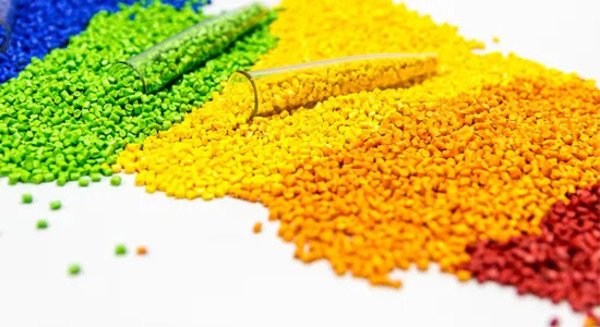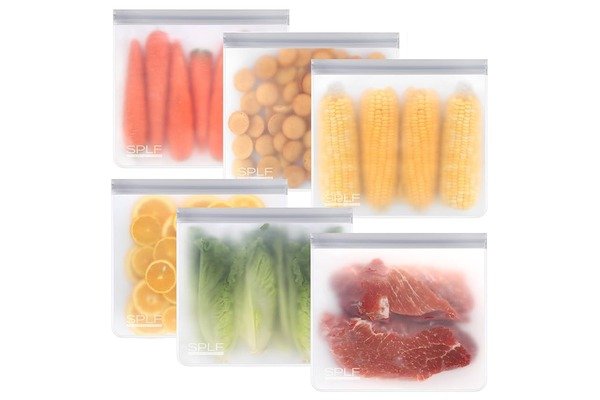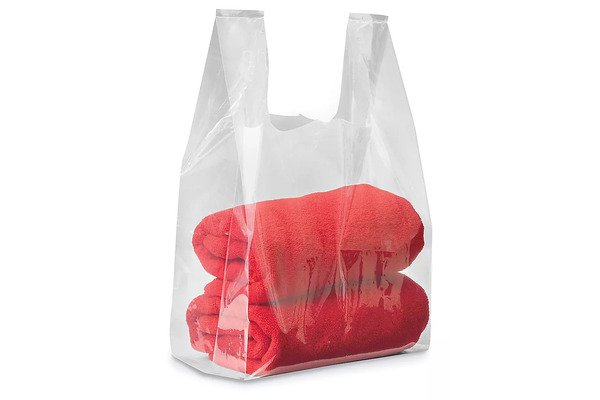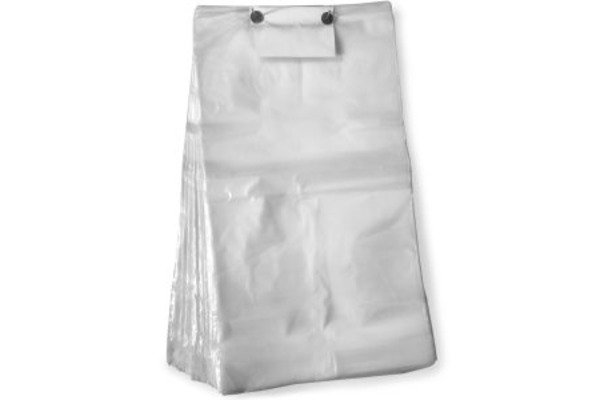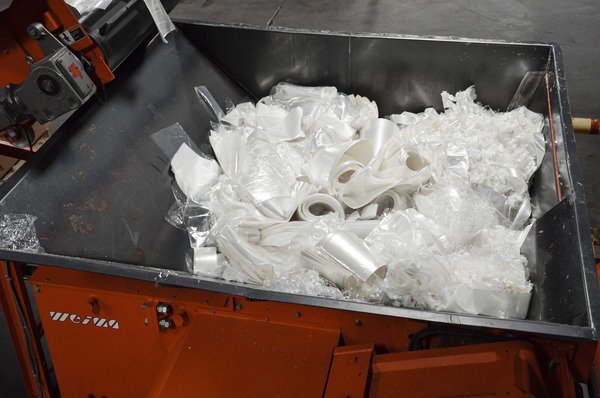
Are you watching piles of scrap OPP film take up valuable space in your facility? This waste not only contributes to disposal costs but also represents a missed financial opportunity, creating a constant nagging feeling that you're throwing away potential revenue. By investing in the right recycling process1, you can transform that costly waste stream into a profitable new product.
Yes, Oriented Polypropylene (OPP) film2 is recyclable. It is a thermoplastic categorized as Type 5 plastic (PP). This means it can be melted, reprocessed into pellets, and used to manufacture entirely new products, making it a valuable material in a circular economy.
While OPP film is technically recyclable, the process is not as simple as tossing it into a standard recycling bin. Its thin, lightweight nature can cause issues for general-purpose recycling facilities. For this reason, specialized equipment is necessary to handle it effectively. This equipment is designed to shred, melt, and transform the film into uniform, high-quality pellets. This ensures the material is clean and consistent enough to be used as a raw material for new manufacturing cycles, turning industrial waste into a commodity.
The main challenges in recycling OPP film come from its physical properties and common uses.
- Contamination: The films often have inks, adhesives, or other residues from their life as packaging. These must be properly filtered out.
- Low Density: Film is light and fluffy, making it difficult to collect and feed into machines without clogging them. Special shredders or agglomerators are needed to densify the material first.
- Sorting: In a mixed waste stream, it's hard to separate from other materials. This is why recycling post-industrial scrap, which is clean and uniform, is much more efficient.
What Does "Oriented" Polypropylene Mean?
Polypropylene (PP) is a durable and versatile polymer. The term "oriented" means the plastic film has been stretched mechanically in one or two directions. This process aligns the polymer chains, which significantly increases the film's stiffness, strength, and clarity. This is why OPP and BOPP (Biaxially Oriented Polypropylene) are so popular for packaging everything from snacks to electronics. The orientation gives it strength without adding weight.
Understanding Plastic Resin Codes
The number inside the chasing arrows symbol identifies the type of plastic. This code is not a guarantee of recyclability but an identifier for sorting.
| Resin Code | Plastic Type | Common Uses | General Recyclability |
|---|---|---|---|
| #1 PETE | Polyethylene Terephthalate | Water and soda bottles | Commonly Recycled |
| #2 HDPE | High-Density Polyethylene | Milk jugs, shampoo bottles | Commonly Recycled |
| #5 PP | Polypropylene | OPP film, containers, car parts | Recyclable, infrastructure growing |
| #6 PS | Polystyrene | Foam cups, disposable cutlery | Difficult to Recycle |
| #7 Other | Other Plastics | Mixed polymers, bio-plastics | Varies, often not recycled |
While OPP is Type 5 and therefore recyclable, its success depends on having the right collection and processing infrastructure. For industrial users who generate large amounts of clean scrap, setting up a dedicated recycling system is the most direct and profitable path.
What Machines Are Used to Recycle and Pelletize OPP Film?
Turning flimsy film scrap into dense, usable pellets requires a dedicated production line. So, what equipment do you need for this transformation?
To recycle OPP film, you need a plastic pelletizing line3. This system typically includes a shredder or agglomerator to densify the film, an extruder with a degassing system to melt it, a screen filter to remove impurities, and a pelletizer to cut it into pellets.
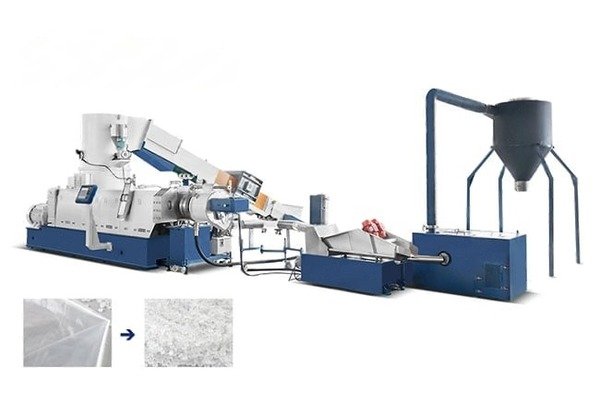
The entire process is designed to take low-value scrap and convert it into a high-value raw material. Here’s a deeper look at each stage.
The Step-by-Step Recycling Process
- Feeding and Densifying: The process starts with feeding the loose film scrap into the system. Because the film is so light, it's first sent to a shredder or an agglomerator. A shredder cuts the film into small flakes. An agglomerator uses friction to heat and compact the film into denser, irregular chunks. This step is critical for ensuring a stable and consistent feed into the extruder.
- Extrusion and Degassing: The densified material then enters the extruder. Inside, a heated barrel and a large rotating screw melt the plastic and push it forward. Most pelletizing lines for film include a degassing or venting system. These vents allow moisture, ink vapors, and other gases to escape, which is crucial for producing strong, non-porous pellets.
- Melt Filtration: Before the plastic is cut, it is forced through a melt filtration system, also known as a screen changer. This unit contains fine mesh screens that catch any solid contaminants like dirt, paper, or unmelted particles. A clean melt is essential for high-quality pellets.
- Pelletizing: Finally, the clean, molten plastic is shaped into pellets. The most common method for film is water-ring pelletizing. As the plastic exits the die, rotating blades cut it into small pellets. A ring of water immediately cools the pellets and carries them away to be dried.
What Is the Price Range of OPP Film Recycling Equipment in China?
Knowing you need the equipment is one thing; budgeting for it is another. Let's look at the typical investment required for a pelletizing line from China.
The price for a complete OPP film recycling line from a Chinese manufacturer typically falls between $20,000 and $100,000 USD. The cost varies based on the line's output capacity (kg/hr), level of automation, and the sophistication of its components.
The price isn't just one number. It's a spectrum that depends on your specific production needs.
Factors Influencing the Price
The three main factors determining the final cost are capacity, configuration, and automation. A machine for a small-scale operation will cost much less than a fully automated line for a large industrial recycler.
Price Breakdown by Capacity and Features
| Machine Capacity (kg/hr) | Configuration Level | Estimated Price Range (USD) | Key Features |
|---|---|---|---|
| 100–200 kg/hr | Basic | $20,000 – $35,000 | Single-stage extruder, manual screen changer, basic shredder |
| 300–500 kg/hr | Standard | $40,000 – $70,000 | Two-stage extruder, hydraulic screen changer, agglomerator |
| 500+ kg/hr | Advanced | $75,000 – $120,000+ | Double degassing vents, continuous backflush filter, PLC control |
- Capacity: Higher output machines need larger motors, bigger screws, and more robust construction, which increases the price.
- Extruder Design: A standard single-stage extruder is good for clean, dry film. If your film is heavily printed or has some moisture, a two-stage extruder with better degassing is recommended, which adds to the cost.
- Automation: A basic line requires more manual labor to operate. A fully automated line with a PLC touchscreen interface reduces labor costs and improves process stability, but the initial investment is higher.
How Long Does It Take to Recoup the Cost of a Pelletizing Machine?
You see the price tag, but the real question is about the return. How quickly can this investment pay for itself and start generating profit?
The typical payback period for an OPP film pelletizing machine is between 6 and 18 months. Your actual return on investment (ROI) depends directly on the volume of scrap you process, your operational costs like labor and electricity, and the market price for recycled pellets.
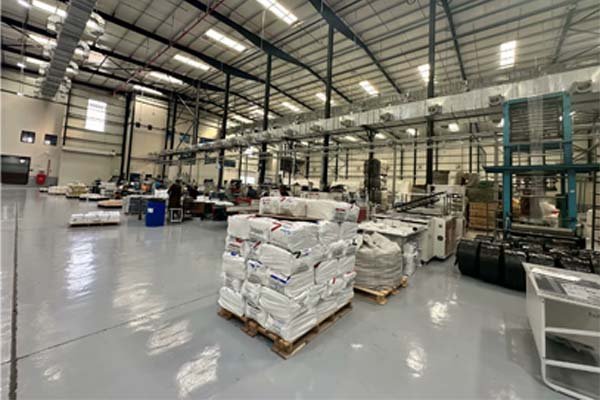
Let's break down the math with a simplified example to see how this works in practice.
Sample ROI Calculation
Imagine you invest in a standard-capacity machine and have a consistent supply of post-industrial OPP film scrap.
| Item | Value | Notes |
|---|---|---|
| Initial Investment | ||
| Machine Cost | -$50,000 | A standard 300 kg/hr line. |
| Monthly Revenue | ||
| Scrap Processed | 40,000 kg | Assuming 300 kg/hr 8 hrs/day 20 days/month at 85% uptime. |
| Value of Recycled Pellets | $0.70/kg | This market price fluctuates. |
| Total Monthly Revenue | $28,000 | (40,000 kg * $0.70) |
| Monthly Operating Costs | ||
| Labor | -$3,000 | Cost for two operators. |
| Electricity | -$4,500 | A major cost, varies by region and machine efficiency. |
| Maintenance | -$500 | Replacement screens, blades, etc. |
| Total Monthly Costs | -$8,000 | |
| Monthly Net Profit | $20,000 | ($28,000 - $8,000) |
| Payback Period | 2.5 Months | ($50,000 / $20,000) |
This is an idealized example. Your actual payback period will depend on your unique situation. If you are currently paying for waste disposal, you should also add those savings to your profit calculation, which would shorten the payback period even further.
What Are the Applications and Market Value of Recycled OPP Pellets?
You've successfully turned your film scrap into pellets. Now what? Let's explore who buys these pellets and what they're worth.
Recycled OPP pellets are used to make a wide variety of non-food-grade plastic products. Common applications include injection-molded parts, pipes, and plastic lumber. Their market value is typically 50-70% of the price of virgin polypropylene, depending on quality.
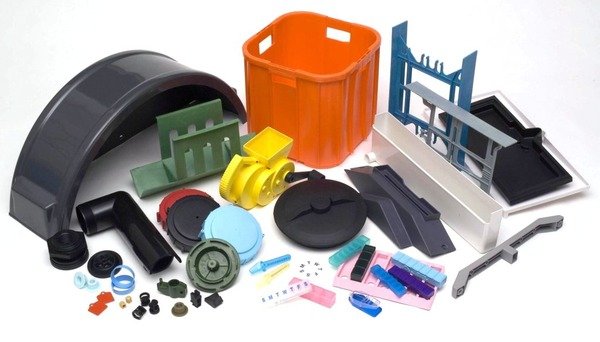
The demand for recycled materials is growing, driven by both cost savings and corporate sustainability goals.
Common End-Uses for Recycled PP Pellets
- Injection Molding: This is a huge market. The pellets are melted and injected into molds to create solid items like storage bins, buckets, outdoor furniture, automotive components, and toy parts.
- Extrusion: Pellets can be extruded into profiles to make products like plastic lumber for decking, pipes for non-pressure applications, and plastic sheeting.
- Compounding: The pellets are often sold to plastic compounders. These companies mix the recycled PP with virgin material, colorants, or other additives to create custom blends for specific manufacturing needs.
Factors That Determine Pellet Value
Not all recycled pellets are created equal. Their market price depends heavily on their quality.
- Purity: The cleaner the pellet, the higher the value. Pellets with no contamination are the most desirable.
- Color: Natural or white pellets command a premium because they can be easily dyed to any color. Dark, mixed-color pellets are less versatile and therefore cheaper.
- Melt Flow Index (MFI): This measures the viscosity of the molten plastic. Manufacturers need pellets with a consistent MFI to ensure their machines run smoothly.
Can OPP Film Be Recycled Together with Other Materials?
You have different types of plastic scrap in your facility, and you might wonder if you can simplify the process by mixing them. This is a common question.
No, you should not recycle OPP film (Type #5) with other plastic types like PET (#1) or HDPE (#2). Each plastic has a unique melting point and chemical structure. Mixing them creates a contaminated, low-quality material that is unusable for most applications.

Mixing different plastics is like trying to bake a cake by mixing flour with sand. The final product will have no integrity.
The Problem of Polymer Contamination
Different polymers behave differently when heated. If you try to melt them together, you will run into serious problems.
Melting Point Mismatches
| Plastic Type | Code | Approx. Melting Point (°C) | Result of Mixing with PP (~165°C) |
|---|---|---|---|
| Polypropylene (PP) | #5 | ~165°C | N/A |
| PET | #1 | ~255°C | Will not melt properly, creating solid lumps in the final product. |
| HDPE | #2 | ~130°C | Can degrade or burn at PP's higher processing temperature. |
| PVC | #3 | Varies widely | Can release harmful gases when overheated, damaging equipment. |
The Exception: Mixing with Other PP
You can, however, recycle OPP film with other clean polypropylene items (also #5 plastic). For example, you could mix clean OPP film scrap with rejected PP containers or parts. As long as the base polymer is the same, the material is considered a clean stream. However, you must still be mindful of different colors or additives, as these will affect the final quality of your pellets.
What Are the Recommended Brands and Manufacturers of Pelletizing Machines in China?
China is a global leader in manufacturing plastic recycling machinery. If you are in the market for a pelletizing line, some brands are well-recognized for their quality and reliability.
Leading Chinese manufacturers of plastic pelletizing machines include Avian, Purui, and ACERETECH. These companies offer a wide range of recycling lines and have established a global reputation for performance and service.
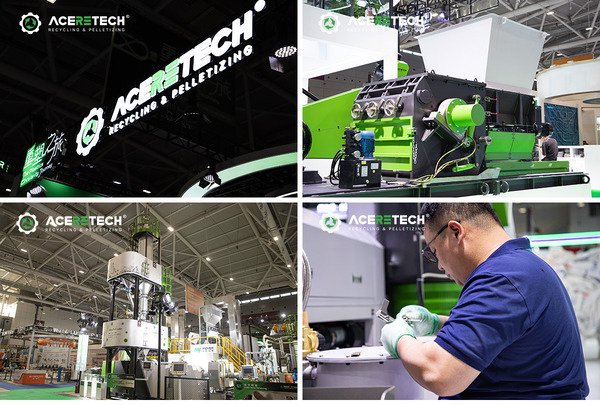
When choosing a supplier, it is important to look beyond the machine itself and consider the company's full offering.
How to Evaluate a Manufacturer
- Look for Industry Experience: Choose a company that specializes in plastic recycling machinery, especially for film. They will better understand the challenges involved.
- Request Case Studies & References: Reputable manufacturers will be happy to provide you with case studies or connect you with existing customers. This is the best way to verify the real-world performance of their equipment.
- Inquire About After-Sales Support: Good support is just as important as a good machine. Ask about their warranty policy, availability of spare parts, and if they offer on-site installation and training. As noted by some business writers, the art of making something reliable matters. A solid warranty, which often starts from the shipping date, is a sign of a manufacturer's confidence in their product.
What Operational Details Are Critical to Improve Recycling Efficiency?
Simply buying a high-quality machine is not enough. To truly maximize your return on investment, you must focus on efficient day-to-day operations.
To improve recycling efficiency, focus on three critical details: ensuring material is clean and well-sorted before it enters the machine, maintaining a consistent feeding rate to prevent jams and overloads, and following a strict schedule for regular machine maintenance.
Small adjustments in your daily workflow can lead to big improvements in output and pellet quality.
Best Practices for Efficient Operation
- Material Preparation: The quality of your output is determined by the quality of your input.
- Sorting: Be strict about removing all contaminants. A single piece of PVC or a metal scrap can ruin a large batch of pellets and damage your equipment.
- Drying: If your film scrap is wet, you must dry it first. Wet material creates steam in the extruder, resulting in hollow or foamy pellets with poor structural integrity.
- Consistent Feeding:
- Feed the material into the shredder or agglomerator at a steady, even pace. Overloading the machine causes motor strain and downtime. A conveyor belt is a great tool for achieving a consistent flow.
- Proactive Maintenance:
- Do not wait for something to break. A well-maintained machine runs more reliably and efficiently.
Sample Maintenance Checklist
| Component | Frequency | Task |
|---|---|---|
| Shredder/Agglomerator Blades | Weekly | Inspect for sharpness and damage. Sharpen or rotate blades as needed. |
| Extruder Screen Filter | Daily | Monitor the pressure gauge. Change the screen when the pressure rises. |
| Extruder Screw and Barrel | Annually | Perform a thorough inspection for wear. A worn screw reduces efficiency. |
| Gearbox Oil | Every 6 Months | Check the oil level and change it according to manufacturer specifications. |
Conclusion
Recycling OPP film is a feasible and highly profitable venture for businesses that generate film waste. With the right equipment and efficient operational practices, you can successfully convert a costly waste stream into a valuable, in-demand raw material for the plastics industry.
-
Understanding the recycling process for OPP film can guide you in implementing effective recycling practices in your facility. ↩
-
Exploring the benefits of recycling OPP film can help you understand its potential in reducing waste and generating revenue. ↩
-
Learning about the equipment for a plastic pelletizing line can help you make informed decisions for your recycling setup. ↩

